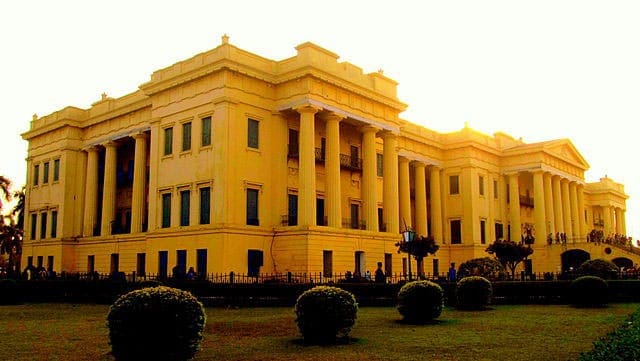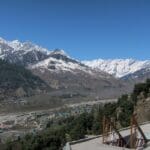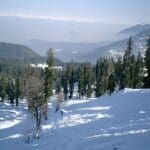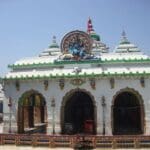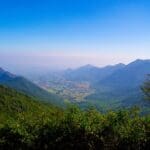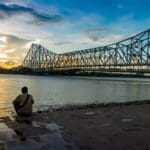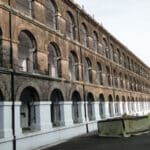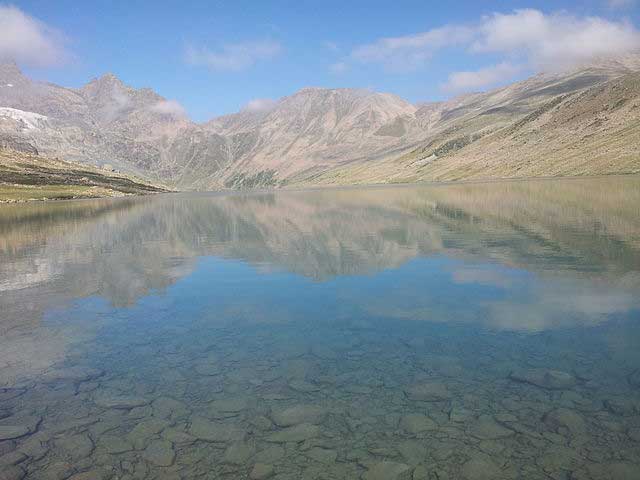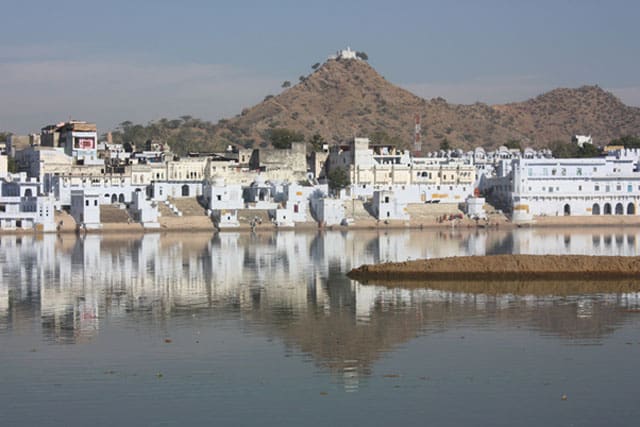Nestled on the banks of the Bhagirathi River, Murshidabad stands as a testimony to Bengal’s regal past, steeped in history, culture, and architectural brilliance. Once the capital of Bengal during the Mughal era, Murshidabad boasts a grandeur that attracts history enthusiasts, culture seekers, and wanderlust-driven travelers alike. This ancient city, adorned with magnificent palaces, serene gardens, historically significant mosques, and vibrant markets, offers an immersive experience to every visitor. In this comprehensive guide to the Top 5 Places to Visit in Murshidabad, we reveal must-visit gems that showcase the enduring legacy and rich charm of this fascinating city.
1. Hazarduari Palace – The Palace of a Thousand Doors
The Architectural Gem of Murshidabad
Among the top 5 places to visit in Murshidabad, the Hazarduari Palace reigns supreme as the city’s most iconic attraction. Built in 1837 by architect Duncan MacLeod under the patronage of Nawab Nazim Humayun Jah, this majestic three-story palace is famed for its 1,000 doors—900 real and 100 false, meticulously crafted to confuse potential intruders. The architectural style harmonizes Indo-European elements, radiating an imposing yet elegant presence.
Exploring the Palace Interior
The palatial complex houses the Hazarduari Museum, featuring an array of rare artifacts, weapons, porcelain, priceless paintings, antique furniture, manuscripts, and the famed Durbar Hall. The Durbar Hall, with a grand chandelier—second in size only to the one at Buckingham Palace—offers a glimpse into the royal grandeur. Stroll through the expansive halls and corridors adorned with Persian carpets and Belgian mirrors. Each section echoes the city’s opulence.
Hazarduari Library
Enthusiastic bibliophiles will be drawn to the palace’s regal library, home to more than 10,000 books, some dating back several centuries, along with rare manuscripts that chronicle the illustrious lineage of Bengal’s Nawabs.
Serene Grounds and Surroundings
The Hazarduari Palace stands amidst ruins of the past, close to the Imambara—an Islamic congregation hall—and is surrounded by the tranquil gardens that once provided leisure and respite to the Nawabs. A visit here lets you step directly into the pages of imperial history.
2. Nizamat Imambara – The Spiritual Heart of Murshidabad
Imposing Structure and Spiritual Significance
Located adjacent to the Hazarduari Palace, the Nizamat Imambara crafts a spiritual aura with its sheer magnitude and architectural sophistication. Built by Nawab Mansur Ali Khan in 1847 to replace the older structure ravaged by fire, the present-day Imambara is recognized as the largest in India and one of the largest in the world.
Majestic Architecture
This imposing congregation hall features three large halls divided by doors: the central hall reserved for sermons and religious gatherings, flanked by two wings of equal significance. Marvel at the intricate stucco and floral motif work, beautiful marble floors, and mighty chandeliers which together create a serene, almost ethereal environment.
Festivities and Annual Gatherings
The Nizamat Imambara comes alive during Muharram, adorned with elaborate illuminations and bustling crowds. Even during quieter times, the Imambara emanates tranquility, making it an essential part of any Murshidabad itinerary.
3. Katra Masjid – The Majestic Mosque Complex
A Historical Marvel
The timeless elegance of Katra Masjid cements its place among the top 5 places to visit in Murshidabad. Commissioned by Nawab Murshid Quli Khan, the founder of Murshidabad, this mosque was completed in 1724 and stands as a perfect amalgamation of devotion and artistry.
Architectural Splendor
The mosque is famous for its robust fort-like structure. Two towering minarets—over 70 feet each—flank the entrance, offering panoramic views of Murshidabad for those willing to climb their 67 steps. The courtyard was intended for thousands of worshippers, evidenced by the capacious expanse and careful design. The mosque’s walls reveal Quranic inscriptions, intricate terracotta artwork, and a distinctive austerity that befits its function as a place of worship.
Historical Anecdote
A fascinating fact about Katra Masjid is that Nawab Murshid Quli Khan chose to be buried under the mosque’s stairs, symbolizing utmost humility—he wished every devotee to tread over his grave before entering the mosque.
4. Motijheel – The Pearl Lake and Its Enchantments
A Tranquil Retreat Surrounded by History
Known as the “Pearl Lake,” Motijheel sprawls as an artificial horseshoe-shaped lake encircled by lush gardens and iconic monuments from the Nawabi era. This picturesque locale was established by Nawazish Muhammad Khan, the son-in-law of Nawab Alivardi Khan.
Motijheel Palace and Surrounding Structures
The magnificent Motijheel Palace and adjacent buildings once served as the residence and administrative hub of the Nawabs of Bengal and, briefly, the East India Company’s Governor. Ruins of the mosque and remnants of the grand entrance echo the area’s former glory.
Natural Allure and Birdwatching
Today, Motijheel is a favorite retreat for locals and visitors alike, drawn by the tranquil waters, sprawling green cover, and diverse avian population. It transforms into a birder’s paradise in winter, with migratory birds flocking to the region.
An Oasis in Murshidabad’s Heart
Stroll along Motijheel’s banks, enjoy a boat ride, or simply bask in the peaceful ambiance—this site offers a unique blend of natural beauty and historical resonance.
5. Kathgola Palace – The Garden Estate of Riches
The Opulent Kathgola Gardens
On the periphery of the city, the Kathgola Palace and Gardens reveal the affluence and influence of Murshidabad’s Jain merchant class. Constructed by the Dugar family in the 18th century, the estate comprises an opulent palace, lush gardens, and a revered Jain temple.
A Tour of the Palace
The Kathgola Palace exhibits European and Bengali influences with exquisite wooden carvings, grand staircases, and lavish interiors. Of particular interest are the intricate wall murals, rare antique furniture, and treasures from far-flung parts of the world collected by its erstwhile owners.
Kathgola Gardens and Jain Temple
The surrounding gardens, dotted with fountains, marble statues, and tropical flora, create an aura of luxury and serenity. The Adinath Jain Temple, resplendent in white marble and adorned with gold, serves as a sacred center, drawing devotees and tourists alike.
Stories from the Past
The estate was a hub for secret meetings and intrigue during periods of political turbulence, including the events leading to the Battle of Plassey. Today, it stands as a monument to both mercantile prosperity and religious devotion.
Exploring Beyond the Top 5: Other Murshidabad Attractions
While the above embody the finest jewels of Murshidabad, several other landmarks await exploration:
-
Jahan Kosha Cannon – One of India’s largest cannons forged in the 17th century.
-
Tomb of Azimunnisa Begum – A striking example of Mughal-era architecture, shrouded in myth.
-
Chowk Masjid – With its grand arches and domes.
-
Nashipur Rajbari – A grand palace displaying colonial influences.
-
Fauti Mosque – Known as ‘the unfinished mosque’, famed for its size and haunting beauty.
Rich Culture and Festivals of Murshidabad
Visiting Murshidabad is more than exploring monuments; it’s about immersion in local traditions, cultural performances, and festivals. The city celebrates vibrant festivals such as Durga Puja, Muharram, and numerous fairs that bring together communities, showcase local artforms, and fill the air with folk music and tantalizing aromas of Bengali cuisine.
History and Origins of Murshidabad
Founded during the Mughal era and named after Nawab Murshid Quli Khan, Murshidabad flourished as the capital of Sube Bangla—a province comprising Bengal, Bihar, and Orissa. The city’s strategic location on the banks of the Bhagirathi catalyzed its growth into a commercial, cultural, and political center. The infamous Battle of Plassey in 1757 marked a pivotal shift, leading to the rise of British rule in India and setting in motion events impacting the subcontinent for centuries.
Best Time to Visit Murshidabad
The quintessential time to savor Murshidabad’s charm is during the cooler months from October to March. Pleasant temperatures, clear skies, and colorful festivities augment the experience. However, each season presents unique opportunities: the monsoon breathes life into the gardens, while the summer sun bathes the palaces in golden light.
How to Reach Murshidabad
Murshidabad is well-connected by rail and road:
-
By Train: The nearest stations are Murshidabad and Berhampore Court, with frequent trains from Kolkata and other major cities.
-
By Air: The closest airport is Netaji Subhas Chandra Bose International Airport in Kolkata, approximately 200km away.
-
By Road: Regular buses and taxis ply from Kolkata, offering a scenic journey through rural Bengal.
A Culinary Journey in Murshidabad
No trip here is complete without indulging in the local gastronomy. Savor the legendary Murshidabadi biryani, the unique chhanar dalna (paneer curry), ilish machh (hilsa fish), and an array of delectable sweets like sita bhog, misti doi, and pantua. Street markets near Hazarduari Palace and Katra Masjid buzz with flavors and aromas sure to delight every palate.
Shopping for Souvenirs
Murshidabad is renowned for its handcrafted treasures. Pick up
-
Murshidabadi Silk Sarees: Handwoven with intricate patterns.
-
Ivory and Sholapith Crafts: Exquisite artistry reflecting Bengali heritage.
-
Mementos: Local artifacts depicting Nawabi culture.
Safety, Travel Tips, and Local Etiquette
-
Wear comfortable shoes for exploring large sites.
-
Respect local customs, especially in religious spots—dress modestly and remove footwear where required.
-
Photography may be restricted inside some monuments and religious structures.
-
Early mornings and late afternoons are ideal for photography and avoiding crowds.
Murshidabad – The Living Tapestry of Bengal
From the palatial splendor of Hazarduari Palace and spiritual grandeur of Nizamat Imambara to the tranquil allure of Motijheel and exotic gardens of Kathgola, Murshidabad encapsulates the essence of Bengal’s storied past. Weaving together stories of triumph, intrigue, artistry, and devotion, these top 5 places to visit in Murshidabad offer an unforgettable journey through time. Whether tracing the footsteps of Nawabs, seeking spiritual solace, or soaking in architectural marvels, visitors leave with memories bathed in history and cultural richness.
FAQs
-
What is the best time to visit Murshidabad?
The best time to visit Murshidabad is from October to March when the weather is pleasant and ideal for sightseeing. -
What are the must-see attractions in Murshidabad?
The top must-see attractions are Hazarduari Palace, Nizamat Imambara, Katra Masjid, Motijheel, and Kathgola Palace. -
How can I reach Murshidabad from Kolkata?
Murshidabad is accessible by train, bus, taxi, or private vehicle from Kolkata. The journey by train is approximately 4-5 hours. -
Are guides available at the historical sites?
Yes, government-approved and local guides are available at major sites like Hazarduari Palace to enhance your visit. -
What dishes should I try in Murshidabad?
Must-try dishes include Murshidabadi biryani, various Bengali sweets, and traditional fish curries. -
Is Murshidabad suitable for solo travelers?
Yes, Murshidabad is safe and welcoming for solo adventurers, with plenty of historical and cultural sites to explore. -
Are there any good hotels in Murshidabad?
The city offers a wide range of options, from heritage hotels to budget accommodations near key tourist spots. -
Can I visit all top 5 places in one day?
While possible with a planned itinerary, it is recommended to spread the visits across two days to appreciate each location fully. -
What souvenirs can I buy in Murshidabad?
Look for Murshidabadi silk sarees, local handicrafts, and artifacts inspired by Nawabi heritage. -
Are there any annual festivals worth witnessing?
Murshidabad hosts vibrant festivals like Muharram, Durga Puja, and various fairs that showcase the city’s rich traditions. -
Is photography allowed inside the palaces and mosques?
Photography policies vary; some areas restrict it, so always check signages or ask officials at each site. -
What language is commonly spoken in Murshidabad?
Bengali is predominant, though Hindi and English are understood at major attractions and hotels. -
Are there local transport facilities?
Rickshaws, autos, and cycle-vans are commonly available for commuting within the city. -
What is the historical significance of Hazarduari Palace?
Hazarduari Palace served as the Nawab’s residence and administrative hub during the 19th century and now houses a remarkable museum. -
Can I plan a family trip to Murshidabad?
Yes, Murshidabad is family-friendly, offering educational and cultural experiences suitable for all age groups.


